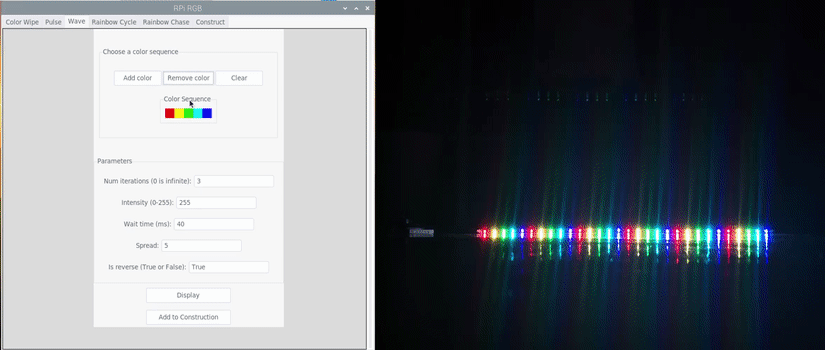1 Overview
PiLED has a graphical user interface (GUI) implemented in Tkinter for easy control of a WS2812/SK6812 RGB LED strip. Not only can you display a static set of colors, you can also chain together pre-defined LED patterns to create your own sequences.

2 Motivation
I wanted to be able to easily customize my RGB LED strip, but with the projects available out there, creating sequences required a fair bit of coding. Furthermore, these projects also did not allow me to change the intensity of the RGB LED lights. To solve this, I built a GUI app for creating custom sequences and changing the intensity of the lights.
3 Design
3.1 Hardware
I only used the following hardware:
- Raspberry Pi 4
- WS2812 or SK6812 RGB LED strip
- Three jumper wires
I connected them according to the diagram below:

3.2 Software
3.2.1 Instant Feedback
As seen in the gif above, the RGB LED strip immediately reflects the change when a color is added or removed. This instant feedback allows the user to visualize the pattern far more easily. You can also use the color picker to visually choose the color you want instead of fumbling for hex codes.
3.2.2 Predefined LED Patterns
There are 5 pre-defined LED patterns:
- Color Wipe
- Pulse
- Wave
- Rainbow Cycle
- Rainbow Chase
Try them out!
3.2.3 Construct Your Own
Choosing from your own LED patterns or the pre-defined LED patterns, patterns are added to a queue to form a custom sequence. This allows for customizability without any coding.
4 Results
